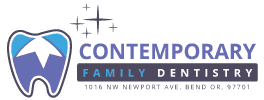Taking care of our teeth is an essential part of our daily routine. While brushing and flossing may seem mundane, it is vital to maintaining optimal oral health. Good oral hygiene can prevent dental issues like cavities, gum disease, and bad breath. This article will discuss the importance of brushing and flossing, the proper techniques, and tips to ensure optimal oral health is at its best.
Why Brushing and Flossing Is Important
Brushing and flossing are essential for optimal oral health for several reasons. Firstly, it helps to remove food particles and bacteria that can accumulate in the mouth, which, if left untreated, can lead to tooth decay and gum disease. Secondly, brushing and flossing can help prevent bad breath caused by bacteria that thrive in the mouth. Finally, proper oral hygiene can help prevent more severe issues such as tooth loss and gum disease.
How Often Should You Brush and Floss?
Dentists recommend brushing our teeth twice daily, once in the morning and once before bed, for two minutes each time. Brushing for two minutes ensures that we remove as much plaque as possible, which can cause tooth decay and gum disease. In addition to brushing, flossing is also essential for good oral health. Dentists recommend flossing at least once daily to remove food particles and bacteria between the teeth, which are hard to reach with a toothbrush.
Techniques for Brushing
While brushing your teeth may seem straightforward, using the correct techniques to ensure you clean your teeth properly is essential. Here are some tips for brushing your teeth:
- Hold your toothbrush at a 45-degree angle to your teeth.
- Use gentle circular motions to clean your teeth and gums.
- Brush the front, back, and top surfaces of your teeth.
- Use a toothbrush with soft bristles to avoid damaging your teeth and gums.
- Replace your toothbrush every three to four months.
According to the National Health Center, Percent of adults aged 18 and over with a dental visit in the past year: is 63.0% (2022)
Techniques for Flossing
Flossing can be challenging for some people, but it is essential to maintaining optimal oral health. Here are some tips for flossing:
- Start with an 18-inch section of floss and wind most of it around one of your middle fingers. Wind the remaining floss around the same finger on your other hand. This finger will take up the used floss as you progress.
- Hold the floss taut between your thumbs and index fingers and insert it gently between your teeth using a sawing motion. Avoid snapping the floss into place, as it can harm the gum tissue.
- Curve the floss around each tooth’s base into a C-shape and gently slide it under the gumline.
- Once you have reached the gumline, move the floss gently up and down the side of the tooth, making sure to clean under the gumline.
- Use a fresh section of floss for each tooth to avoid spreading bacteria.
- Do not forget to floss behind your back teeth as well.
- When you are done flossing, use your index fingers to take up the used floss and dispose of it properly.
Following these techniques for flossing can help remove plaque and bacteria from between your teeth, contributing to better oral health.
Tips for Optimal Oral Health
In addition to brushing and flossing, there are other things you can do to maintain optimal oral health. Here are some tips:
- Brush your teeth for at least two minutes twice daily using fluoride toothpaste. Brushing helps remove food particles, bacteria, and plaque from your teeth and gums.
- Flossing once a day helps remove food particles and bacteria from between your teeth that brushing alone cannot reach.
- Mouthwash can help kill bacteria and freshen your breath. Look for a mouthwash that contains fluoride to help strengthen your teeth.
- Sugary and acidic foods can damage your teeth and lead to cavities. Limit your consumption of these foods and drinks, and rinse your mouth with water after consuming them.
- Drinking water helps wash away food particles and bacteria in your mouth and can help prevent dry mouth, which can contribute to tooth decay.
- Chewing sugarless gum can help stimulate saliva production, which helps wash away food particles and neutralize the acid in your mouth.
- Regular dental checkups and cleanings can help detect and prevent oral health issues before they become more serious.
These tips help maintain optimal oral health and prevent cavities, gum disease, and bad breath.
Conclusion
Brushing and flossing are simple yet effective ways to maintain optimal oral health. By following the correct techniques for brushing and flossing and implementing tips for optimal oral health, you can prevent dental issues such as tooth decay, gum disease, and bad breath. Remember, caring for your teeth is essential for maintaining your overall health.
FAQs
1. Is brushing and flossing enough to maintain optimal oral health?
Brushing and flossing are essential for optimal oral health but should complement other practices. Regular dental checkups, a balanced diet, limiting sugary foods and drinks, and using mouthwash can further enhance your oral health.
2. How long should I brush my teeth?
Dentists recommend brushing your teeth for two minutes each time. This duration thoroughly cleans all tooth surfaces and helps remove plaque effectively.
3. Should I use a specific type of toothbrush?
Using a toothbrush with soft bristles is recommended to prevent damage to the teeth and gums. The size and shape of the toothbrush head should comfortably fit in your mouth and reach all areas of your teeth.
4. How often should I replace my toothbrush?
Toothbrushes should be replaced every three to four months or sooner if the bristles become frayed. Using a worn-out toothbrush may not effectively clean your teeth.
5. Is flossing necessary if I brush my teeth regularly?
Yes, flossing is necessary even if you brush your teeth regularly. Flossing helps remove plaque and food particles from between your teeth and along the gum line, where toothbrush bristles cannot reach.



